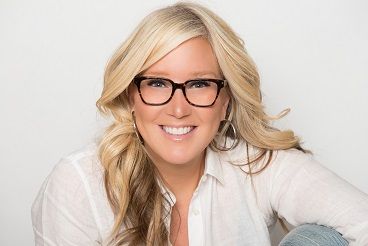Awkward Conversations: Assessing and Responding to Domestic Violence
Shelter-in-place orders have led to a "horrifying surge in domestic violence," says the United Nations Secretary-General Antonio Guterres. The World Health Organization asks that healthcare workers be cognizant of the signs and symptoms of domestic violence in their patients. In today's "Awkward Conversations" column, Dr. Kim Gorgens and Margaret Port cover domestic violence among chronically ill patients.
Dr. Gorgens

Margaret Port

Healthcare professionals play the most vital role when it comes to identifying and responding to violence-related risks to patients in their homes and that violence happens more often than you might think.
The CDC estimates that one in four women and one in seven men have been exposed to serious interpersonal violence. Among women, more than one in three heterosexual women experience sexual violence and the rates are even higher for lesbian and bisexual women.
The risk continues across the lifespan. More than one in 10 adults over age 60 are exposed to abuse and those older adults have a 300% greater risk of death relative to their peers who are not abused. The stakes couldn’t be higher.
Physicians are mandated to report suspected abuse in some cases (elder and child) but few reports actually come from physician practices, rheumatology or otherwise. Less than 2% of reports to Adult Protective Service reports are filed by physicians despite the steady exposure to these patients and their symptoms.
Even fewer referrals are made to local domestic violence providers. Research suggests that physicians fare the worst at identifying women exposed to interpersonal violence in the home. In one study, 1,000 abused women rated health care professionals to be the “least effective professionals in recognizing and addressing abuse” and statistics suggest that physicians identify one in 35 patients as being battered, when an exhaustive review of medical records documents the actual rate to be one in four. In specialty practice, once physicians start asking about safely and exposure to violence, the identification rate goes from “a few” per each year to 2-3 per week.
SPECIALTY PROVIDERS
Specialty providers like rheumatologists are more likely have longer-term relationships with their patients and have the luxury of building stronger rapport. Those specialty visits often include private conversations and more careful physical examination. For patients with chronic illnesses like arthritis and/or auto-immune disorders, these specialists may be the only point of official contact for women and men who are being abused. In fact, there is some data to suggest that there is a direct correlation between exposure to violence and chronic health complaints like gastrointestinal distress and chronic pain. In one study, patients with fibromyalgia who are exposed to abuse had significantly more health and disease-related complaints than their peers with abuse. Sadly though, abusers tend to control their partner’s access to professional services like healthcare or medication so that visit to your specialty office may be the only opportunity these women and men have to get help.
So, in addition to high stakes of monitoring the safety and efficacy of biologic treatments and other therapies in immune-mediated inflammatory diseases, what else are you being asked to watch for? The answers are pretty straightforward. You may see physical injuries related to abuse including un- or poorly explained injuries like bruises, broken bones, or broken eyeglasses and other injuries in various stages of healing. You may get reports of lab results reflecting under/overdoses of medications. For patients with sexual trauma, you may see bruising around the breasts or genital areas, unexplained or recurring STI/genital infections or unexplained vaginal/anal bleeding.
You might also notice subtle behavior changes like withdrawal or a sudden refusal to undress or be examined. Commonly, patients who are being abused appear withdrawn, agitated, uncommunicative, or nervous. In older adults, it is easy to misattribute these changes or the emergence of unusual behaviors to dementia. Among older adults in particular, the signs of neglect can actually mimic a descent into dementing disease. For example, increasingly poor hygiene, bedsores/skin breakdown/poor wound care, and poorly managed health complaints are hallmark signs of both.
See next page, "Physical abuse and the chronically ill."
PHYSICAL ABUSE OF THE CHRONICALLY ILL
One other vulnerability unique to patients with chronic physical illness is the risk for financial exploitation. You or your office staff may notice abrupt changes in financial status (e.g., sudden delinquency in payment), or the sudden appearance of previously uninvolved relative, or reports of a sudden loss of assets. Research suggests that family members are the most common perpetrators of financial elder abuse (in more than half of cases) and that older adults with any manner of cognitive deficits are at the greatest risk. In all of these cases, you may have the experience of a patient or their partner/family members suddenly refusing to let you see or examine the patient alone or your front desk staff might notice an uptick in cancelations. You can see where every member of the treatment team and office staff may be privy to some separate but important piece of the puzzle.
You may already have experience leaving messages with anonymous reporting hotlines but there is so much more you can do. Recognizing that you may be the sole point of contact, you can see there is a greater burden of responsibility on you to ensure patient safety. One specialty practice I’ve seen includes a note on the wall of the patient restroom used for collecting urine specimens.
The directions read “If-for any reason-you feel unsafe today, use the RED pen to write your name on the cup and a nurse will escort only YOU to the examination room and we will get you help”. Outside of making it easy for your clients to identify themselves to you, there are so many ways to empathically address your suspicions with patients directly, in private. With any suspicion, you can make referrals to mental health, legal or emergency shelter services.
One important caveat from my clinical work and research in a victim service center, is to always ask your client if they can safely take brochures or phone numbers for emergency shelters. Many women and men have faced more violence when partners discover these materials or unknown phone numbers in the pockets of their victims. The same caution applies to voice mails and electronic communication-it is safer to assume that any communication outside of the privacy of your office can jeopardize your client’s safety and be cause for additional victimization.
As to your options in cases where you have identified an imminent harm, the AMA recommends that you make sure that patient has safe place to go before releasing them. Compiling a directory of local victim service centers (centers with legal, health, mental health, childcare, and emergency housing service representatives under one roof) is time well spent.
LEARN THE SIGNS OF ABUSE
You can invite representatives from these centers to your practice for in-person trainings on the signs of abuse, trauma-informed approaches to patient care and best-practices in patient care in those scenarios. In cases of suspected elder abuse, most states consider physicians to be mandated reporters so preparing another document with the information for your local Adult Protective Services hotline is also essential. If you can’t locate that information, the national elder care hotline (1-800-677-1116) can direct you to a local agency that can help. Establishing a seamless workflow for reporting suspected elder abuse is key.
The take-home message here is to be alert to the signs of abuse, make it easy for your patients to disclose their need for help, and always ASK about safety in the home. In practice, the majority of physicians don’t and that omission can cost women and men their lives. And, for any readers whose own homes aren’t safe, please have this conversation with someone you trust. Making the assessment of safety a priority means being prepared to have awkward but potentially life-saving conversations.